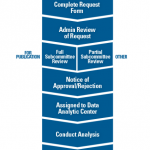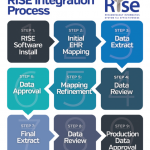 Seasoned rheumatologists remember the good old days of clinical practice when a patient encounter lasted more than 10 minutes and documentation of that visit took less than an hour. In today’s healthcare environment, which is driven by electronic health records (EHRs) and quality measure reporting, rheumatologists are more cogs in the data machine than clinicians.
Seasoned rheumatologists remember the good old days of clinical practice when a patient encounter lasted more than 10 minutes and documentation of that visit took less than an hour. In today’s healthcare environment, which is driven by electronic health records (EHRs) and quality measure reporting, rheumatologists are more cogs in the data machine than clinicians.
The literature and mainstream media have long documented integrity issues with regard to data collection, most notably copy-and-paste errors and poor system designs. A study in the Journal of Patient Safety that looked at 300,000 malpractice claims showed health IT-related errors were more prevalent in ambulatory settings.1,2,3
Rheumatologists must care about the quality of the data they collect and disseminate, “because it is going to affect your patients, your clinical decision making and your practice. We want the cleanest data available,” says rheumatologist Puneet Bajaj, MD, MPH, of the University of Texas, Southwestern in Dallas, and one of the newest members of the ACR’s Registries and Health Information Technology (RHIT) Committee. “Basically, ‘clean’ data means high-fidelity data that can be trusted and relied on as the single source of truth. That is valuable to your patients and your practice, [because] it affects clinical decision support and health outcomes.”
Technology, data and quality reporting are becoming more important to medical practices, and you must understand their importance. He continues, “In the future, data on health outcomes may be available for patients to review online, and [reimbursement] that is based on the estimated value of a product or service could be a reality and common practice. Providers need to be committed to making changes in their practice and on their EHRs.”
Quality Data
“The ultimate goal is for RISE [the Rheumatology Informatics System for Effectiveness registry] to be a great feedback cycle for rheumatologists,” says Ryan Larosa, the ACR’s director of registry operations, noting his team works with hundreds of EHR vendors and continuously updates the RISE data dictionary. “The ACR develops guidelines for treatment, so ultimately, the goal is for the data we are getting from real-world practice to help guideline development and implementation.
“Real-world practice data are never going to be like a clinical trial. There are a lot of things doctors don’t have control of when it comes to patient compliance in those settings. … But our error rate is extremely low because our mapping process is intense up front.”



